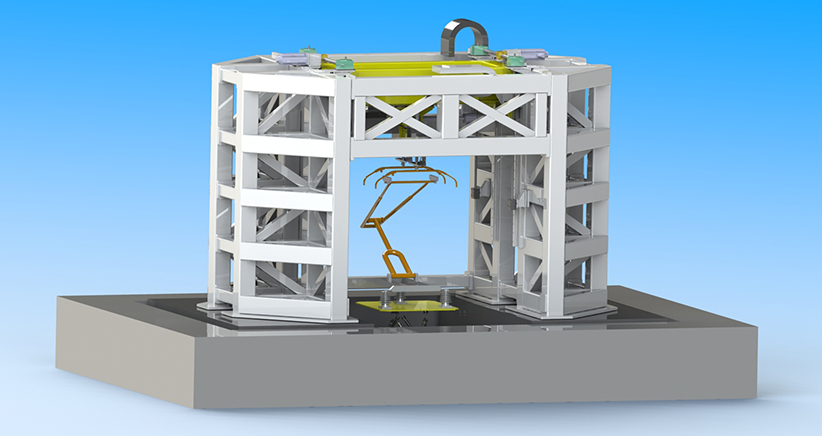Combining world-class test facilities with groundbreaking software is helping University of Huddersfield researchers to support the rail industry's quest for novel technology seeking greater efficiency, safety and sustainability.
Key to achieving these goals is improving the supply of electricity to trains via Overhead Line Equipment(OLE). The University's Institute of Rail Research (IRR) already has a new world-class pantograph test rig, which isand it is now coupling up with an innovative piece of software to provide the industry with the solutions it needs.
PantoCat is a numerical analysis tool that interprets data and analyses the behaviour from the interaction between the pantograph - the framework that extends upwards from a train - and the overhead catenary wires that supply power to vehicle.
 The University's Pantograph Rig
The University's Pantograph Rig What does PantoCat do?
Using the software to analyse information from the test rig means that simulations of many different scenarios can be played out. With the UK's HS2 high-speed rail link on the horizon, and with proposals on the table for electrifying the Trans-Pennine route on the University's doorstep, the IRR's research is set to have practical results soon.
"There is escalating interest from within the industry," says Joao Pombo, Professor of Railway Technology at the IRR. "Network Rail, rail operators and rolling stock manufacturers/suppliers are keen to know about this research and development work, especially with the implications it could have for the government's target of decarbonising the railways by 2040."
Study Mechanical Engineering at the University of Huddersfield
The pantograph rig and PantoCat software can also work in tandem using a 'Hardware in the loop' simulation.
"It's a concept that when we have a complex system to study, it can be simplified and studied more accurately by splitting it into two - hardware and software," Joao continues.
"PantoCat will run on our computers, telling us exactly where the contact point on the rig is and telling it to apply loads in given positions with certain forces. The pantograph rig will apply the loads, mimicking the behaviour of the contact wire, while collecting sensors data. Our system will then work out what loads to apply in the numerical model of the catenary, to give a new a position for the pantograph loads. It needs to run in real time and at high speeds."
Benefits with HS2 and TransPennine upgrade looming
With HS2 and an electrified Trans-Pennine route offering to radically slash journey times, the IRR's potential to simulate the effects of high-speed journeys on vital equipment is unique, adds Dr Pedro Antunes, Senior Research Fellow at the IRR.
"Another of the rig's novel features is the moving table below, which reproduces the movement of the vehicle, such as when it's on a curve or experiencing track perturbations. This unique, world- class test facility can emulate the pantograph-catenary dynamics at speed above 400 km/h. It's one of the best rigs of its kind in the world, with all the bells, whistles, features and performance required."
The IRR is also researching into how technology can cope with the challenges posed by the ageing infrastructure on parts of the UK rail network, including it'sits many tunnels that date back to the Victorian era.
 Huddersfield pantograph researchers Dr Pedro Antunes (left) and Professor Joao Pombo
Huddersfield pantograph researchers Dr Pedro Antunes (left) and Professor Joao Pombo Coping with rail network's ageing infrastructure
It is looking at how trains can run in electric bi-mode - where they use batteries in tunnels before using pantographs when emerging. Rigid catenaries that can be built in existing tunnels that would mean potentially expensive new tunnels need not be built are also being assessed.
"We have many tunnels in the Pennines," Joao adds. "To electrify the line, either the tunnels are rebuilt, which is impossible or expensive, or we can run in electric/battery mode. In the tunnels, the pantograph is lowered then raised again outside, running on batteries inside the tunnels then charging the batteries on the catenaries outside."
The IRR is also helping to improve catenary technology in other ways, including a new wire clamp assembly developed in conjunction with local company Associated Utility Supplies. The new aluminium bronze clamp assemblies, that help hold up overhead wires, are lighter and have a lower carbon footprint than their cast iron predecessors, besides being easier to install and remove.






